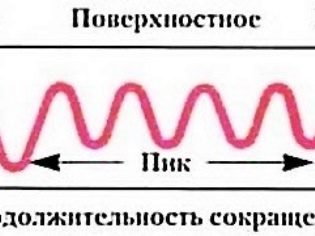Proper breathing during labor and labor
All pregnant women have ever heard about the importance of proper breathing during labor and childbirth. There are rules recommended by obstetricians from all over the world, and they are based on years of medical experience and key techniques for facilitating labor. If a woman complies with these rules, childbirth will be much easier, the baby’s condition will be more stable throughout the entire process of birth, and the risk of complications for the mother and baby will be much lower. In this article, we will talk about how to breathe properly during fights and strokes.
What is it for?
The intensity of human breathing, the type of inhalation and exhalation affect the state of health and internal processes in his body immediately. If you do not believe, you can try right now to make a series of short and shallow breaths from the mouth (like a dog breathing), and within a minute you will notice that a slight dizziness has appeared.
Breathing can activate or slow down gas exchange in the body, saturate it with oxygen, and activate blood circulation. Calm and even breathing perfectly calms even in a stressful situation.
At the first stage of labor activity - during contractions, even and calm breathing provides an opportunity to fully relax between them. Such relaxation may well replace painkillers drugs. It is with relaxation that women usually experience the biggest problems. More often than not, the fear of childbirth, pain, about which a woman has heard and read so much, does not relax.
If you practice proper breathing in advance, for example, during training fights (although they themselves do not need proper breathing or medical anesthesia), then if true fights occur, it will be easier for a woman to tune in to the correct breathing rhythm.
The more she can relax at the starting latent stage, the less she feels physically painful during labor. This is proven by doctors, tested by many parturient women and can not be doubted.
During the expulsion of the fetus from the uterus, the observance of the rules of breathing makes every effort more effective, which means that the baby can be born at least a few attempts earlier. Compliance with the rules of breathing reduces the likelihood of maternal injuries during attempts, it is not without reason that experienced obstetricians urge women to breathe haphazardly and not to scream so that there are no ruptures of the cervix and vagina.
The child also wins from the right breaths and breaths in the active stage of labor. With intensive gas exchange, a woman’s blood is more easily saturated with oxygen, the baby receives it even after the waters discharge, even when the mother’s genital tract passes, if there is no premature detachment of the placenta. “Baby Place” to the last performs its function of providing the baby with everything necessary.
Rhythmic breathing technique during childbirth allows a woman to better control herself, listen and hear all the teams of the medical team, to perform them in a timely manner. This reduces the likelihood of complications of birth injuries to the infant. Proved that childbirth on the background of proper breathing is faster, the woman and the child feel much better after them, the head of the baby is born gently and non-traumatic.
The rules of breathing in the period of labor and during the attempts of women are taught absolutely free of charge at the courses of expectant mothers in any antenatal clinic. But in Russia for some reason these courses are neglected, only 15% of primipara women attend such classes. Among the multiparous, this percentage is even lower - no more than 2%. Classes at the school for future mothers are not considered mandatory, women in Russia may attend them or not attend at their discretion. In some European countries, such a choice is not provided to pregnant women - in order to get to the obstetric institution to the selected doctor, the expectant mother is simply obliged to take classes and provide the appropriate document about it.
Refusal to attend courses by Russians seems not too correct. Many issues and difficulties could be avoided if a woman knew well at least by the last trimester of pregnancy how she herself should act in the event of the onset of labor, discharge of waters, the onset of labor contractions.
The reasons for refusal may be different - employment at work, at home, studying, feeling unwell, etc. But then you need to spare personal time and still get acquainted with the key breathing techniques during labor activity. Starting from the second half of pregnancy, experts advise the expectant mother to train in breathing techniques for about 10 minutes a day.
Basic technology
There are several techniques, but they are all based on certain types of breathing. In everyday life, we breathe now with our breasts, now with our stomach (observe yourself right now, and you will understand that this is so, and so you are quite comfortable, by the same time from time we breathe mixed - both on horseback and peritoneum). Such a chaotic breath at the crucial moment of the birth of a new life will have to be forgotten. To learn how to breathe in the right way, you should start by learning the key types of breathing that will be useful to you. Learn them in the sequence in which they are listed, do not run ahead.
Abdominal, lower (abdominal breathing) - the thorax remains immobile, only the belly rises and falls as air is drawn in and out. Place one palm on the chest, the other - on the stomach. During training, that arm that is on the chest should not rise, and the second one, which is located on the stomach, should rise as high as possible. Breaths need to be done deep enough, expirations - smooth.
- Full Combined - when you inhale and exhale, both the chest and abdominal wall rise and fall. Difficulty (in any case, at the very beginning of classes) arises in order to do all this in a wavy manner - from the bottom up. Imagine breathing in your lower abdomen. First, the abdomen is filled with air (an element of abdominal breathing), then the air flows smoothly from the abdomen to the chest, and then it is sent back.
Learning will also be easier with the attachment of the palms to the chest and peritoneum. When inhaling, the palm on the abdomen rises smoothly, on the exhale, it falls, the palm on the rib cage rises.
- Economical breathing - after breathing the combined type is obtained, you need to learn how to save oxygen. Continue to breathe in combination, but now the inhalation remains the same in duration, and the exhalation becomes twice as long. A long exhalation will help with attempts.
- Breathing fast - a series of short breaths and exhalations. Especially useful will be this type of breathing during labor. People call the main method “candle” - after a short breath, a woman makes a sharp and short exhalation, such as she would do to extinguish the flame of a candle, if it were in front of her face. Reception "Big Candle" implies stronger repeated exhalations, as if a woman need to blow out several candles at the same time. It may be useful breathing "doggy", with his mouth open.
- Technique for attempts - This is a special breath, which should be trained during pregnancy with extreme caution.It is useful in the process of expulsion of the fetus. As soon as the obstetrician gives the command to make a push, the woman takes in her mouth with as much air as possible into her chest. Imagining how the air "pillow" begins to put pressure on the uterus from above, helping the baby to be born, you need to hold your breath. Breathe out briefly after holding back breathing becomes impossible. Immediately you need to gain air in your mouth again and again to push. As soon as the obstetrician asks to relax, you need to breathe the full (combined) type that was mastered earlier.
Respiratory gymnastics should be the best "friend" of the expectant mother during the second and third trimester. You can practice in any posture, but it is best to do exercises with different body positions in space - standing, lying, sitting, and even while walking. This will help to bring the ability to breathe correctly almost to automatism, in labor, even if they start suddenly, there will be no special problems in order to recall the necessary techniques and reproduce them.
At different stages of labor, the basic techniques will be combined differently. So let's consider the process of giving birth to a child from the point of view of the rules of breathing from beginning to end.
Contractions
During labor pains, there is a shortening of the muscle fibers of the cervix, it becomes shorter, opens and releases the exit for the baby. This stage can last for several hours, on average, from six to ten hours. Full disclosure of the cervix will automatically mark the beginning of the second stage of labor - the expulsion of the baby from the womb, which has become too small for him.
Proper breathing at this stage helps relieve pain during contractions. But it all begins with a preliminary period, which gradually turns into the development of contractions. The contractions intensify gradually, and therefore at the very beginning, when they are still rare and weak, the woman should breathe in a combined type, calmly and deeply enough. This will give her the opportunity to relax, relieve fear, tension, saturate the body with oxygen. If there is a lot of oxygen, it works as a natural anesthetic in the body, the pain decreases. With an excess of oxygen in the body begin to produce endorphins, they help to relieve the process of contractions.
At this stage, it is not necessary to use only abdominal breathing or rapid, it will be quite enough to take a long slow breath and the same slow and long breath.
As the contractions increase, combined breathing will no longer bring relief, and you will need to add elements of frequent breathing to it. This is where the ability to “blow the candle”, extinguish the “big candle” and breathe like a dog is useful.
Frequent breathing increases the concentration of oxygen in the body, endorphins start to be produced with a new force, the woman feels the contractions less painful. At this stage, you can independently choose any of their methods (“Candle” or “Big Candle”), focusing entirely on your own feelings. The main thing is to set the breathing rhythm so that the breath hold does not coincide with the peak of the contraction.
When contractions become strong, around the end of the first phase, a woman needs to build a rhythm in such a way as to breathe in with her nose and exhale through her mouth. At the beginning of the fight, you need to breathe more calmly, at the peak - more often, and as soon as the fight begins to decline, again align your breathing to calm.
If partnership deliveries are planned, a woman can master the breathing tactics in the first part of the labor process with her husband. At the time of labor he will become her helper, will regulate breathing, transitions from slow to fast, from deep to frequent and shallow.
Attempts
When trying, much depends on how attentive a woman will be to the commands of the midwife. It is not necessary to push without a team, this may cause the baby to receive a birth trauma, as well as cause injuries to the uterus and the genital tract of the woman herself.Attempts begin after complete disclosure of the cervix.
At the start of this generic period, it is impossible to apply the so-called breath breathing, as described above. Relieve the condition will help breathing "like a dog." Then, when you have time to organize, you need to start breathing with a deep breath and holding your breath for the time it takes. Remember, if during the attempts to exhale sharply the entire volume of air, then the attempt will be wasted - the baby will not move forward much or will not move at all. The exhalation must be smooth, otherwise the pressure of the diaphragm on the uterus will be insufficient.
No matter how strong the desire is to get squeezed without a command, shout instead of breathing properly with breath holding, you need to strictly follow the specified rhythm and meet the requirements of the obstetrician.
After giving birth, you can relax and breathe as you like. The process of birth of the afterbirth (placenta) is not affected in any way. In this process, little depends on the woman in labor.
Scream danger
If a woman screams, she makes this one exhale, thereby forcing it. The lower part of the uterus, when screamed, strains, and the bottom of the uterus continues the contractile contraction. This is fraught with ruptures of the cervix, injuries to the head of the baby. If a woman in labor constantly screams, the risk of fetal hypoxia increases tenfold.
No one argues that all childbirth woman must firmly remain silent, like a Spartan. It is allowed in attempts to draw the sound of the "and-and-and" sound with a closed mouth. Shouting out loud means spending precious energy in vain, interfering with the normal flow of efforts and the work of obstetricians who are interested in the baby being born as soon as possible and born without fail.
"Kobas-breath"
Obstetrician-gynecologist Alexander Kobas compiled a course of breathing at different stages of labor. In honor of him, the method was called "Cobas-breath." The doctor recommended sticking with the following scheme.
- The initial stage of contractions - even calm breathing, by mouth or nose - does not matter much, the main thing is that the inhalation should be long and the exhalation should be smooth. The doctor does not impose special restrictions on motor activity. At the same time, a woman can walk with a relaxing full breath, check whether all things are collected in the hospital, you can do an enema, not forgetting to inhale and exhale correctly. It is impossible to cry, shout, sit or lie still during this period, drink liquids and eat a lot.
- Active contractions - at the beginning of the contraction, slow and deep breaths should be taken, mentally counting from 1 to 4. Then, even slower exhalations from 1 to 6. At the peak stage of the contraction, short and frequent breathing (one of the types described above) is used. At this stage, the doctor does not recommend drinking the liquid, only rinsing the mouth. You can walk, sing songs, you can not scream and cry, eat, strain, trying to "hold back" the pain, pinch - this prevents the neck from opening more quickly.
- Stage of transition from contractions to attempts - breathing is even and deep with “rounding” of the chest and diaphragm. You can not push.
- Attempts - a deep breath, a breath hold and an attempt downwards - in a crotch. Then a smooth exhalation. For one fight, three attempts are repeated. When the head is born, such breathing must be abandoned, and at the obstetrician’s command, breathing shallowly and superficially “dog-like”. During this period, Dr. Kobas does not recommend straining his upper body to avoid hemorrhages. It is also not recommended to keep his legs together and scream.
- The birth of "child" places may be accompanied by any type of breathing, Kobas says, and therefore permits everything. A woman can pull, if she wants, she can cough.
Women who adhered to the Kobas Breathing during childbirth claim that the birth was quite easy, the pain was tolerable. Some even managed to do without screams.
Opinion of Dr. Komarovsky
The famous pediatrician and TV presenter Yevgeny Komarovsky repeatedly emphasized that the health of the child depends largely on the behavior of his mother in labor. The best tactic is to listen to the doctor and obstetrician and strictly follow all the recommendations.
Proper breathing at the same time will be a great helper, thanks to which a woman can control herself, the situation, her feelings. Therefore, it is worth starting to learn breathing techniques as soon as possible.
It is important to remember that all the exercises that are prescribed in the study of the basics of the recommended generic breathing should be done half-heartedly when carrying a child.
The breathing technique during labor, exercises with a trainer and preparation for childbirth are shown in the following video.































